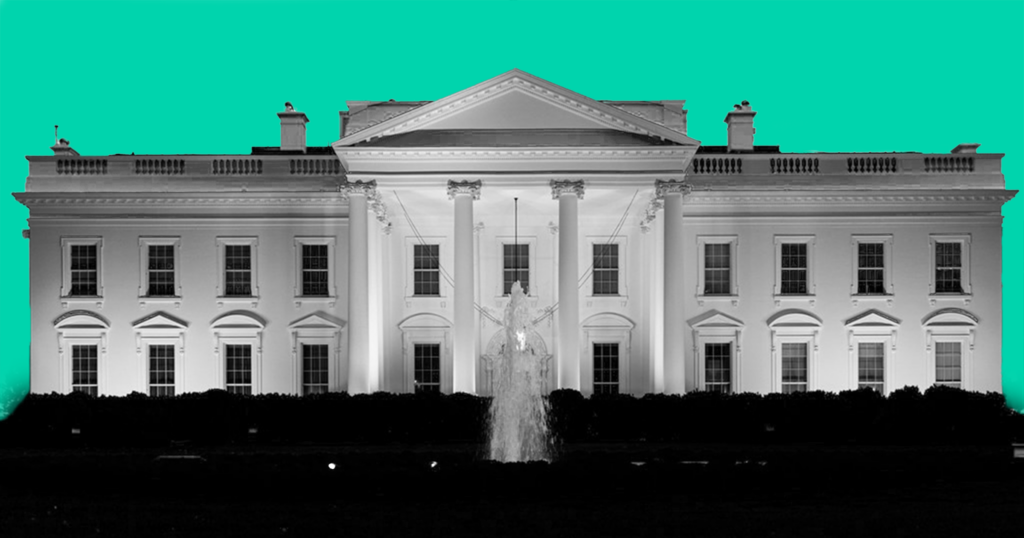In an executive order last week, the president set forth a directive for the nation’s public schools: stop indoctrinating students or lose federal funding. The order targets schools practicing “gender ideology and discriminatory equity ideology.”
Why it matters: The order is part of a broader effort to dismantle what the administration calls discriminatory DEIA initiatives. But it’s not clear exactly what funding, and how much of it, is under threat. The uncertainty alone is a cloud already hanging over schools.
A chilling effect on schools
Educators I spoke to had been anticipating this executive order, already believing their learning programs would be at odds with administration priorities.
No need to sugarcoat: Many of the student-centered schools we know are great for students would likely be caught in the net of this order. That could mean schools that are gender-affirming, celebrate Black history, host cultural celebrations, or teach students values like open-mindedness and empathy.
We celebrate these schools because we share in their belief—backed by evidence—that equitable, student-centered learning is prerequisite to education excellence.
Schools may begin by self-censoring: Watering down or eliminating curricula or programs likely to be labeled as DEIA (Diversity, Equity, Inclusion, and Accessibility). Lessons could be reworked or cut to align with rigid demands to erase historical details concerning race and gender.
Experts caution schools not to over-comply: Without clear directives, they say, do not preemptively dismantle programs. But fears of losing funding might not only impact programs; they could discourage schools from hiring positions they need to fill.
A principal told me what federal funding means for their school: Staff.
In another drag on hiring, the executive order would add DEIA-friendly teacher preparation programs to the chopping block.
What MN lawmakers are saying
The Minnesota Department of Education (MDE) presented a walkthrough of the federal education dollars Minnesota receives to the Senate education finance committee on Tuesday. During an otherwise straightforward informational hearing, clear camps emerged on either side of partisan lines.
Republicans on the committee urged calmness: Ninety percent of our education spending is untouchable by the federal government, they underscored, and we don’t know how much of the other 10 percent is actually under threat.
Democrats on the committee were not content with that uncertainty. In fact, relaying sentiments from school leaders in their districts, the uncertainty itself is causing panic.
Less than a day after being sworn in, rookie Sen. Doron Clark (DFL) pressed MDE staff about that uncertainty, citing as an example a provision of federal spending targeted at increasing graduation rates for American Indian and Black students.
“Would that fall afoul of the DEIA cancellation?” Sen. Clark wondered. MDE could not answer.
Republicans said to not let distractions from Washington keep Minnesota from solving the problems superintendents have come before their committee to ask them to solve.
Democrats reminded their colleagues that the same superintendents have implored them for even one to two percent in additional funding; losing part of ten percent could be catastrophic for students.
Federal spending on MN schools
Minnesota receives roughly $1 billion a year, about 10 percent of state education spending.
One of the biggest slices (~$266M) comes from Title funds, primarily targeted to increase education access and raise the achievement of students from low income families. Title funds have been in place since 1965 and enjoy overwhelming bipartisan support.
Just as popular, the other big piece of the funding pie (~$252M) comes by way of the Individuals with Disabilities Education Act (IDEA), which promises access to a free education, along with services and support, to children with disabilities.
Districts already bear a special education “cross subsidy”—the amount they must spend to cover costs for which funding was promised, but not appropriated, by the state and the federal government. A loss of IDEA funding would make it impossible to abide by the law and protect the Civil Rights of students with disabilities. It would be devastating for families who rely on special education services.
Nearly all federal money is paid as reimbursements. Dollars are allocated to schools on a per-pupil formula—with schools reimbursed by the state, states reimbursed by the feds.
Legal processes for cutting funding are complex and defined in statute—with lead time and chances to course-correct before funding can be cut. Still, some are worried the administration will violate those processes and the protection they provide.
What the executive branch is allowed to do
First, the federal government has no say over what’s taught in schools. Academic standards are set at the state level. Curriculum is set by districts.
Second, Congress alone holds the power of the purse: they allocate spending and the executive has limited routes through which they are authorized withhold funds. Legally, there is no quick turn of the spigot.
A typical route? Civil Rights lawsuits. As the text of the executive order makes clear, the administration believes curricula that address ideas of racial equity are discriminatory. The Office of Civil Rights in the US Department of Education could file “reverse discrimination” suits against schools or districts.
But the administration hasn’t done a lot to signal they plan to take a typical route. Instead, they’re pursuing a broad, unilateral spending “pause” on much of the federal budget—not just education dollars. These attempts have spurred lawsuits from several states, including Minnesota, and have been blocked by federal judges.
This may be part of the plan: Force lawsuits to ultimately seek favorable court rulings, to expand the limits of executive authority over Congressionally-appropriated spending. Or, make it look like that’s the plan; an intimidation tactic.
What’s next?
Rumors are swirling about a new executive order to eliminate the US Department of Education outright. As with the “pause”, deleting a federal agency cannot legally be done with a stroke of a pen or computer key. But the strategy here, too, may be to try anyway.
